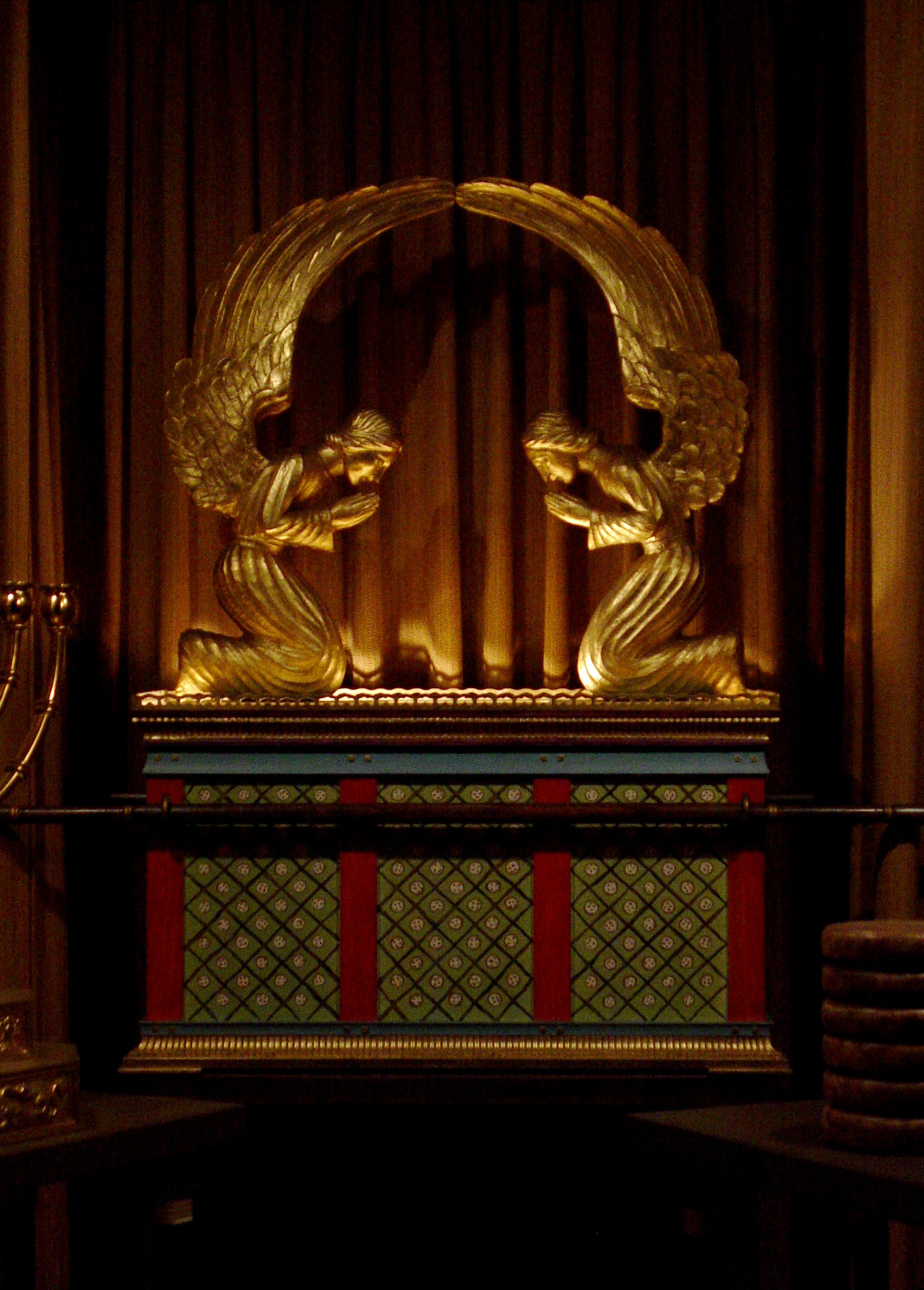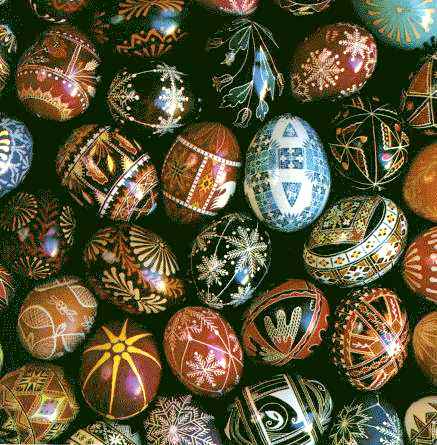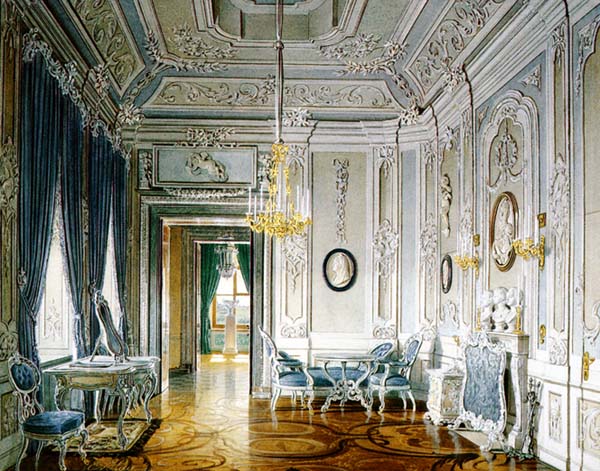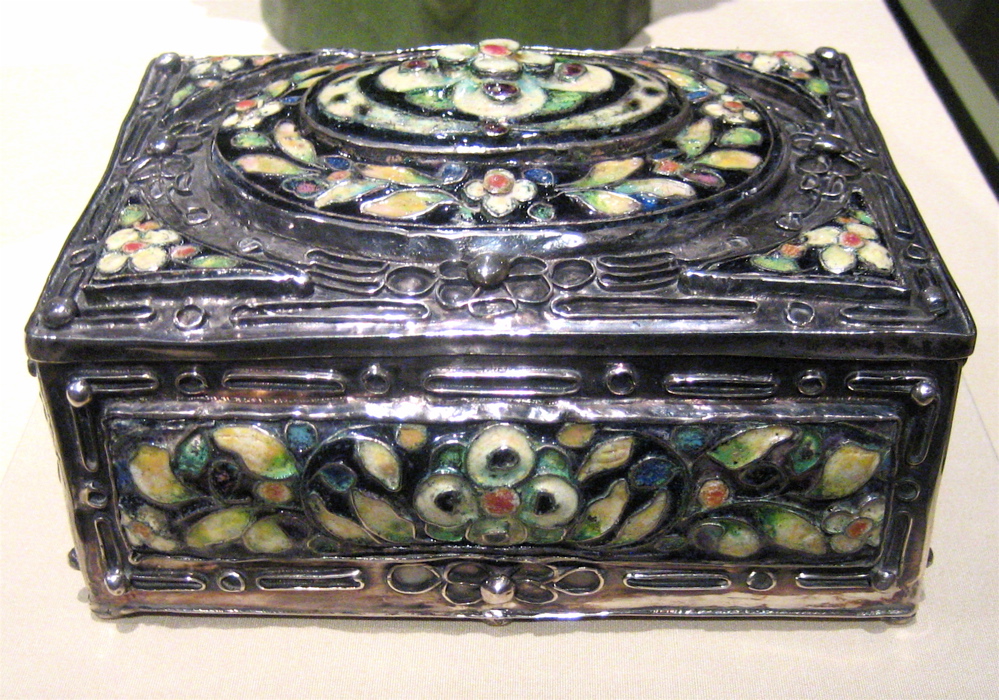|
Nécessaire (Fabergé Egg)
The Nécessaire egg is an Imperial Fabergé egg, one of a series of fifty-two jeweled eggs made under the supervision of Peter Carl Fabergé for the Russian Imperial family. It was crafted and delivered to the then Tsar of Russia, Alexander III who presented it to his wife, Maria Feodorovna on Easter day 1889. The egg is one of the lost Imperial eggs, but is known to have survived the Russian Revolution and was sold by Wartski in London in 1952. Design of egg This egg was designed as an étui containing woman's toilet items. While the exact appearance of the egg is not known, it is described in the 1917 inventory of confiscated imperial treasure as being decorated with "multi-colored stones and brilliants, rubies, emeralds and sapphires." Surprise in egg The surprise was that egg was essentially an etui, or necessaire, with 13 diamond-encrusted implements and toilet articles. History On 9 April 1889, Alexander III presented the egg to his wife, Maria Feodorovna. It was ho ... [...More Info...] [...Related Items...] OR: [Wikipedia] [Google] [Baidu] |
Alexander III Of Russia
Alexander III (; 10 March 18451 November 1894) was Emperor of Russia, King of Congress Poland and Grand Duke of Finland from 13 March 1881 until his death in 1894. He was highly reactionary in domestic affairs and reversed some of the liberal reforms of his father, Alexander II, a policy of "counter-reforms" (). Under the influence of Konstantin Pobedonostsev (1827–1907), he acted to maximize his autocratic powers. During his reign, Russia fought no major wars, and he came to be known as The Peacemaker ( ), with the laudatory title of ''Tsar’-Mirotvorets'' enduring into 21st century historiography. His major foreign policy achievement was the Franco-Russian Alliance, a major shift in international relations that eventually embroiled Russia in World War I. His political legacy represented a direct challenge to the European cultural order set forth by German statesman Otto von Bismarck, intermingling Russian influences with the shifting balances of power. Early life ... [...More Info...] [...Related Items...] OR: [Wikipedia] [Google] [Baidu] |
Tsar
Tsar (; also spelled ''czar'', ''tzar'', or ''csar''; ; ; sr-Cyrl-Latn, цар, car) is a title historically used by Slavic monarchs. The term is derived from the Latin word '' caesar'', which was intended to mean ''emperor'' in the European medieval sense of the term—a ruler with the same rank as a Roman emperor, holding it by the approval of another emperor or a supreme ecclesiastical official—but was usually considered by Western Europeans to be equivalent to "king". Tsar and its variants were the official titles in the First Bulgarian Empire (681–1018), Second Bulgarian Empire (1185–1396), the Kingdom of Bulgaria (1908–1946), the Serbian Empire (1346–1371), and the Tsardom of Russia (1547–1721). The first ruler to adopt the title ''tsar'' was Simeon I of Bulgaria. Simeon II, the last tsar of Bulgaria, is the last person to have held this title. Meaning in Slavic languages The title tsar is derived from the Latin title for the Roman emperors, ''c ... [...More Info...] [...Related Items...] OR: [Wikipedia] [Google] [Baidu] |
Lost Fabergé Eggs
Lost or LOST may refer to getting lost, or to: Arts, entertainment, and media Television * ''Lost'' (TV series), a 2004 American drama series about people who become stranded on a mysterious island * ''Lost'' (2001 TV series), a short-lived American and UK reality series * ''Lost'' (South Korean TV series), a 2021 South Korean series * "Lost" (''The Bill''), a 1985 episode * "Lost" (''Stargate Universe''), an episode of science fiction series ''Stargate Universe'' *"Lost", an episode of ''Unleashed!'' *"Lost", an episode of the Canadian documentary TV series ''Mayday'' *"Lost", an episode of Disney's ''So Weird'' * "The Lost" (''Class''), an episode of the first series of the ''Doctor Who'' spin-off series ''Class'' Films * ''Lost'' (1950 film), a Mexican film directed by Fernando A. Rivero * ''Lost'' (1956 film), a British thriller starring David Farrar * ''Lost'' (1983 film), an American film directed by Al Adamson * ''Lost!'' (film), a 1986 Canadian film directed by Peter R ... [...More Info...] [...Related Items...] OR: [Wikipedia] [Google] [Baidu] |
List Of Missing Treasure
This is an incomplete list of notable treasures that are currently lost or missing. The existence of some of these treasures is mythical or disputed. List See also * List of destroyed heritage * List of lost mines * Treasure hunting * Treasure map * Art theft and looting during World War II * Looted art * Lost artworks * Lost film * Lost literary work * Lost television broadcast * Nazi gold * Nazi plunder References External links * {{Treasure Treasure Treasure Treasure Treasure (from from Greek ''thēsauros'', "treasure store") is a concentration of wealth — often originating from ancient history — that is considered lost and/or forgotten until rediscovered. Some jurisdictions legally define what constit ... Lists of works ... [...More Info...] [...Related Items...] OR: [Wikipedia] [Google] [Baidu] |
Egg Decorating
Egg decorating is the art or craft of decorating egg (food), eggs. It has been a popular art form throughout history because of the attractive, smooth, oval shape of the egg, and the ancient associations with eggs as a religious and cultural symbol. Egg decorating has been associated with Easter in recent times, but was practiced independently by many ancient cultures. History Eggs are an important symbol in folklore and mythology, often representing life and rebirth, healing and protection, and sometimes featuring in creation myths. This means that traditional egg decorating existed throughout the world. Africa The oldest eggshells, decorated with engraved hatched patterns, are dated for 60,000 years ago and were found at Diepkloof Rock Shelter in South Africa.Texier PJ, Porraz G, Parkington J, Rigaud JP, Poggenpoel C, Miller C, Tribolo C, Cartwright C, Coudenneau A, Klein R, Steele T, Verna C. (2010). "A Howiesons Poort tradition of engraving ostrich eggshell containers da ... [...More Info...] [...Related Items...] OR: [Wikipedia] [Google] [Baidu] |
Sovnarkom
The Council of People's Commissars (CPC) (), commonly known as the ''Sovnarkom'' (), were the highest executive authorities of the Russian Soviet Federative Socialist Republic (RSFSR), the Soviet Union (USSR), and the Soviet republics from 1917 to 1946. The Sovnarkom of the RSFSR was founded in the Russian Republic soon after the October Revolution in 1917 and its role was formalized in the 1918 Constitution of the RSFSR to be responsible to the Congress of Soviets of the RSFSR for the "general administration of the affairs of the state". Unlike its predecessor the Russian Provisional Government which had representatives of various political parties, and except for the brief two-party cabinet with the Left Socialist-Revolutionaries from December 1917 to March 1918, the Sovnarkom was a government of a single party, the Bolsheviks. The Sovnarkom of the USSR and Congress of Soviets of the USSR founded in 1922 were modelled on the RSFSR system, and identical Sovnarkom bodies we ... [...More Info...] [...Related Items...] OR: [Wikipedia] [Google] [Baidu] |
Moscow Kremlin
The Moscow Kremlin (also the Kremlin) is a fortified complex in Moscow, Russia. Located in the centre of the country's capital city, the Moscow Kremlin comprises five palaces, four cathedrals, and the enclosing Kremlin Wall along with the Kremlin towers. In the complex is the Grand Kremlin Palace, which was one of the royal residences of the Tsar of Russia, and now is the residence of the president of the Russian Federation. The Moscow Kremlin overlooks the Moskva River to the south, Saint Basil's Cathedral and Red Square to the east, and Alexander Garden to the west. In the Russian language, ''kremlin'' denotes a 'fortress within a city', and there are many historical cities with Kremlin of their own. However, the Moscow Kremlin, the best known, also serves an international-politics metonym that identifies the Government of Russia. During the Cold War (1947–1991), the term ''The Kremlin'' meant the Government of the Soviet Union and the term '' Kremlinology'' meant t ... [...More Info...] [...Related Items...] OR: [Wikipedia] [Google] [Baidu] |
Russian Revolution (1917)
The Russian Revolution was a period of political and social change in Russia, starting in 1917. This period saw Russia abolish its monarchy and adopt a socialist form of government following two successive revolutions and a civil war. It can be seen as the precursor for other revolutions that occurred in the aftermath of World War I, such as the German Revolution of 1918–1919. The Russian Revolution was a key event of the 20th century. The Russian Revolution was inaugurated with the February Revolution in 1917, in the midst of World War I. With the German Empire inflicting defeats on the front, and increasing logistical problems causing shortages of bread and grain, the Russian Army was losing morale, with large scale mutiny looming. Officials were convinced that if Tsar Nicholas II abdicated, the unrest would subside. Nicholas stepped down, ushering in a provisional government led by the Duma (parliament). During the unrest, Soviet councils were formed by locals in ... [...More Info...] [...Related Items...] OR: [Wikipedia] [Google] [Baidu] |
Moscow
Moscow is the Capital city, capital and List of cities and towns in Russia by population, largest city of Russia, standing on the Moskva (river), Moskva River in Central Russia. It has a population estimated at over 13 million residents within the city limits, over 19.1 million residents in the urban area, and over 21.5 million residents in Moscow metropolitan area, its metropolitan area. The city covers an area of , while the urban area covers , and the metropolitan area covers over . Moscow is among the world's List of largest cities, largest cities, being the List of European cities by population within city limits, most populous city entirely in Europe, the largest List of urban areas in Europe, urban and List of metropolitan areas in Europe, metropolitan area in Europe, and the largest city by land area on the European continent. First documented in 1147, Moscow became the capital of the Grand Principality of Moscow, which led the unification of the Russian lan ... [...More Info...] [...Related Items...] OR: [Wikipedia] [Google] [Baidu] |
Gatchina Palace
The Great Gatchina Palace () is a palace in Gatchina, Leningrad Oblast, Russia. It was built from 1766 to 1781 by Antonio Rinaldi (architect), Antonio Rinaldi for Count Grigori Grigoryevich Orlov, who was a favourite of Catherine the Great, in Gatchina, a suburb of the royal capital Saint Petersburg. The Gatchina Palace combines classical architecture and themes of a medieval castle with ornate interiors typical of Russian classicism, located on a hill in central Gatchina next to Lake Serebryany. The Gatchina Palace became one of the favourite residences of the Russian Imperial Family, and during the 19th century was an important site of Russian politics. Since the February Revolution of 1917, February Revolution in 1917, it has been a museum and public park, and received UNESCO World Heritage Site status in 1990. History Imperial era In 1765, Catherine the Great, the Empress of the Russian Empire, purchased from Prince Boris Kurakin the Gatchina Manor, a small Manorialism, ma ... [...More Info...] [...Related Items...] OR: [Wikipedia] [Google] [Baidu] |
étui
A decorative box is a form of packaging that is generally more than just functional, but also intended to be decorative and artistic. Many such boxes are used for promotional packaging, both commercially and privately. Historical objects are usually called caskets if larger than a few inches in more than one dimension, with only smaller ones called boxes. Gift box Traditionally gift boxes used for promotional and seasonal gifts are made from sturdy paperboard or corrugated fiberboard. These boxes normally consist of a base and detachable lid and are made by using a die cutting process to cut the board. The box is then covered with decorative paper. Gift boxes can be dressed with other gift packaging material, such as decorative ribbons and gift tissue paper. Work box The most common type of decorative box is the feminine work box. It is usually fitted with a tray divided into many small compartments for needles, reels of silk and cotton, and other necessaries for stitchery. ... [...More Info...] [...Related Items...] OR: [Wikipedia] [Google] [Baidu] |
Wartski
Wartski is a British family firm of antique dealers specialising in Russian works of art; particularly those by Carl Fabergé, fine jewellery and silver. Founded in North Wales in 1865, the business is located at 60 St James's Street, London, SW1. The company holds Royal Warrant of Appointment (United Kingdom), royal appointments as jewellers to Charles III, Queen Camilla and the late Queen Elizabeth II. History The firm was founded in Bangor, Gwynedd, Bangor, North Wales in 1865 by Morris Wartski, a History of the Jews in Poland, Polish-Jewish immigrant from the town of Turek, in central Poland. Wartski first established a jewellery business on Bangor's High Street and then a drapery store. His son, Isidore, went on to develop the drapery business and create a large, fashionable, store. He also developed the Castle Inn on High Street in Bangor, into the high-class Castle Hotel. He was a popular mayor of the city and a patron of local sports and charities. Wartski Fields we ... [...More Info...] [...Related Items...] OR: [Wikipedia] [Google] [Baidu] |









